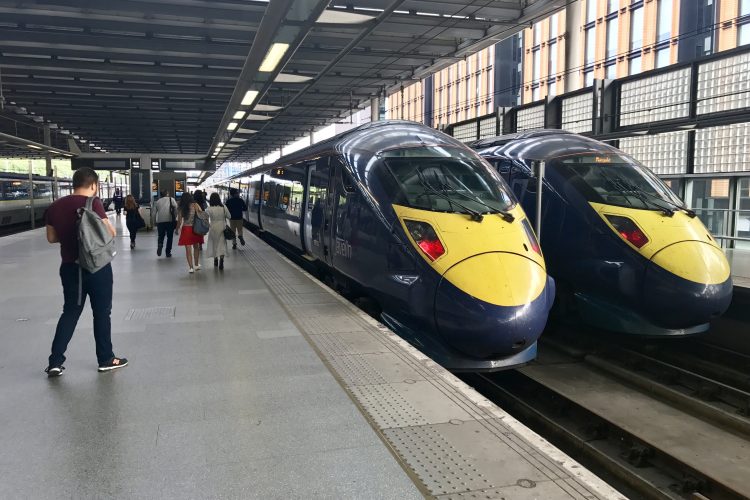How the HS1 train route could connect directly to the National Grid
Posted: 27 May 2024 | | No comments yet
A major new study will examine how a new private electricity system along the HS1 train route could connect to the National Grid and power thousands of homes and businesses across the South East.


HS1 and the University of Kent are leading a new six-month viability study which will consult various energy distribution companies with the likes of SSE, along with National Grid, Kent County Council, the Department for Transport (DfT), and the Department for Energy Security and Net Zero (DESNZ), Kent City Council, Locate Kent, National Farmers Union (NFU) and Thames Estuary Growth Board.
The study will explore a groundbreaking new solution to distribute locally produced clean energy via a private electricity grid. This could be done using a new cable within the existing train line boundary to help power homes and industries in the area and support National Grid capacity.
This has never been done before in the UK and, if successful, could pave the way for similar projects across the country.
A private grid could also connect local clean energy sources to the rest of the county. This could boost energy resilience in the region by increasing the efficiency with which locally produced energy is transferred to the point of demand, without putting extra strain on the National Grid.
With many businesses in Kent expected to have increased electrification needs in the future, a private grid running alongside the HS1 train line could be a pioneering solution.
Furthermore, the UK’s growing number of renewable energy projects – crucial to the transition from fossil fuels to clean energy – will require greater grid transmission capacity in the future.
Wendy Spinks, Commercial Director at HS1, said: “We are very excited to work with the University of Kent to explore the opportunities to diversify the use of the HS1 infrastructure, boost clean energy capacity and growth in the regional economy.
“We have a fantastic asset in our 109 km rail line running through Kent, and we look forward to working with key stakeholders to understand how we can help support energy resilience in Kent.”
Kathy Kotiadis, Professor of Management Science at the University of Kent, said: “We are delighted to be working with HS1 on this innovative study that could be a gamechanger for electricity resilience in the region. We are using Operational Research and Systems Thinking approaches and deploying our extensive experience of engaging with groups of stakeholders in understanding a complex situation.
“This could be an innovative solution to energy resilience that proposes the use of a new wire on existing rail land for the transport of electricity. It has not been done before in the UK, so we need to get a better understanding of its potential by engaging a variety of stakeholders.”
The study will run for a total of six months and involve interviews and workshops with representation from the National Grid, DfT, DESNZ, NFU, Kent County Council, borough councils and several energy companies and institutes.
The University of Kent is also building a simulation model to scope future opportunities and to explore whether this solution could be replicated across the UK and worldwide.
Related topics
Electrification & Cabling, Funding & Finance, High-Speed Rail, Track/Infrastructure Maintenance & Engineering








